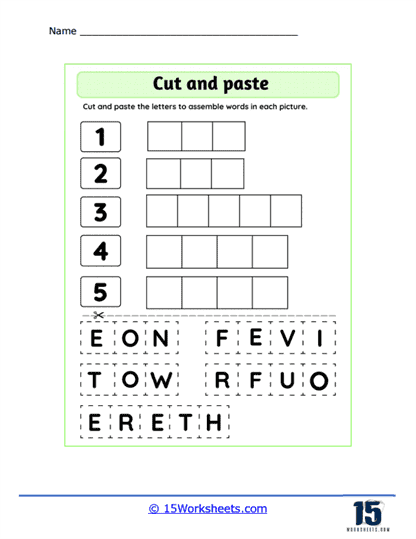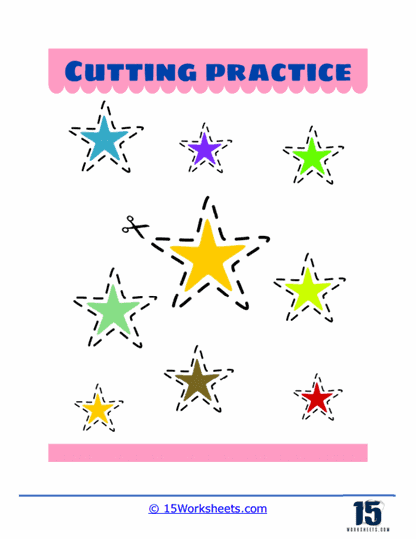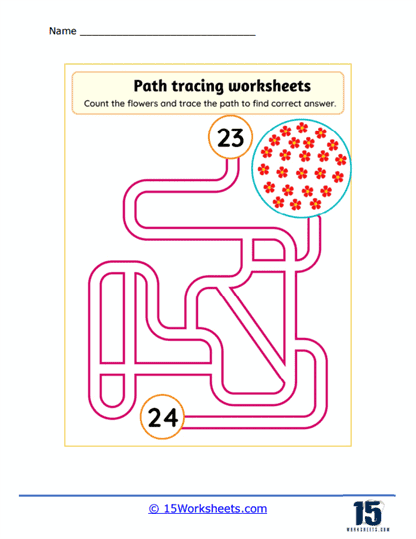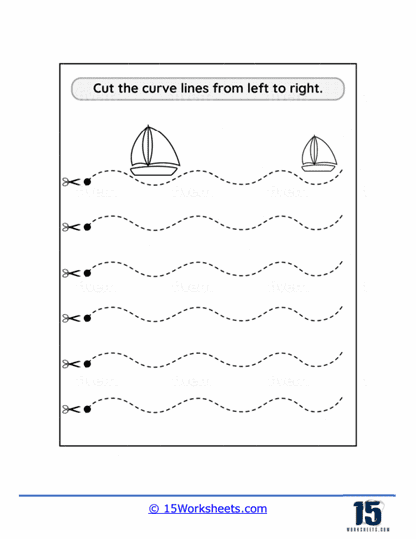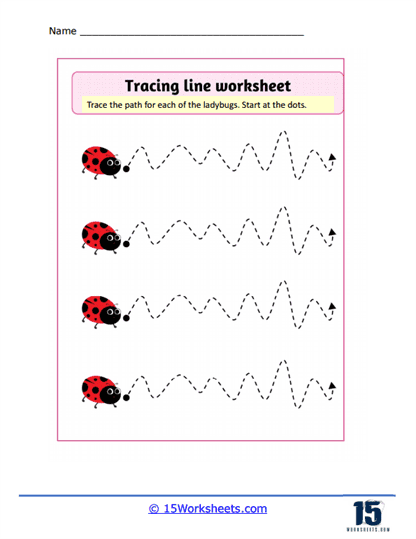Fine Motor Skills Worksheets
About These 15 Worksheets
This delightful collection of Fine Motor Skills worksheets is a playful yet powerful toolkit designed to help young learners develop control, coordination, and confidence in their hand movements. From the precision-filled tasks of Cutting Practice and Scissor Skills, to the creative construction in Cut and Paste, and the focused flow of Path Tracing and Tracing Lines, each worksheet invites kids into a hands-on adventure. Whether they’re mastering the art of the perfect snip or following a wiggly line like a tiny explorer, these activities sharpen essential fine motor abilities through fun, creativity, and just the right amount of glue-sticky chaos.
Snipping & Cutting
Our star players in the scissor Olympics: Cut and Paste and Cutting Practice. On these worksheets, kids masquerade as little tailoring prodigies-slicing nifty shapes, snipping funky squares, precision‑cutting along dotted lines. With Cut and Paste, students don chef hats of focus, trimming and gluing paper pieces onto designated zones like miniature artists assembling a collage remix. Cutting Practice invites more straight‑line drama: it’s a slashing showdown where snip‑accuracy means the difference between a crisp line and an accidental confetti explosion. The result? Those hand muscles flex while the brain relishes the synchrony-an orchestrated ballet of focus, hand-eye coordination, and sheer paper‑rugged determination.
Pathward Tracking: Path Tracing & Tracing Lines
Next up, the “maze‑meets‑zen” duo: Path Tracing and Tracing Lines. These worksheets transform students into mindful meditators with tiny pencils. In Path Tracing, they shepherd a crayon along meandering, whimsical trails-zigzags, spirals, squiggles-like guiding a model train through a tiny, intentionally twisty fantasy. The brain is fully engaged, calculating trajectory and pressure, training fine muscles to obey. Tracing Lines strips it down to the elegant essence: straight, dashed, curved lines that teach steadiness, rhythm, and visual-motor harmony. Each sheet is a quiet yoga session for the fingers-slow, deliberate, and oddly poetic.
Scissor Skills
Now, behold the poster child: Scissor Skills. Think of it as the grand finale of all scissor mastery. This worksheet brings in the big guns: more complex patterns-circles, triangles, maybe even silly stars or cartoon‑like animals. It’s where snippy juniors abandon training wheels and brave boo‑boo territory with intricate loops and subtle curves. As they conquer tricky edges, they’re not just strengthening muscles-they’re building confidence, patience, and a tactile sense of triumph. And yes, occasional accidental snip‑through protests from the paper-tears and laughter are half the fun.
Mindful Motor Musings
Beyond the giggles over globs of glue and pencil‑stopped mittens, these worksheets subtly cultivate a triad of cognitive wonders: precision, patience, and problem‑solving. The act of slicing, tracing, pasting-each micro‑interaction demands a teeny‑tiny decision: angle of approach, grip adjustment, mental counting of dashes. Kids sharpen spatial awareness (“Will my scissors clear the line?”) and enhance focus (“Don’t go off the spiral!”). They learn to anticipate-adjusting pressure mid‑trace or recalibrating the scissors when the paper wobbles. It’s like planting the seeds of concentration discipline seeds in a tiny garden of fine motor vigilance.
A Funny Finale: Tiny Hands, Big Drama
Picture this: little Sally on Cut and Paste, dramatically declaring, “I shall conquer this glue blob!” while wrangling bits of paper like a medieval tapestry‑maker. Or Johnny on Path Tracing, narrating his pencil’s journey: “And then it turns left, right, left-no cliff!” It’s comedic theater, really, each worksheet doubling as a stage for personality quirks and hand‑movement melodrama. But beneath the laughter and glue‑covered fingers lies serious skill development-tiny yet potent. Each cut, paste, and trace is a quiet triumph: “I did it. I stayed on the line. I didn’t butcher the circle.” And that is the magic of fine motor mastery-one giggle, one glue finger, one perfect snip at a time.
What Are Fine Motor Skills?
Fine motor skills refer to the coordination of the small muscles in the hands, fingers, and wrists that allow us to perform precise and controlled movements. These are the skills that help us accomplish everyday tasks like buttoning a shirt, holding a crayon, using a fork, typing on a keyboard, or opening a snack container. For young children, developing these abilities is a crucial part of early growth, as they lay the foundation for independence, self-care, and success in school-related activities such as writing, cutting, and drawing.
Unlike gross motor skills, which involve larger muscle groups for big movements like jumping or running, fine motor skills require much more attention to detail, hand-eye coordination, and concentration. These tasks may look simple to adults, but for young learners, they involve a complex mix of muscle control, timing, and mental processing. When a child traces a line or snips paper with scissors, they are actually working on brain development, visual-spatial awareness, and muscle memory-skills that will support them academically and socially for years to come.
Encouraging the development of fine motor skills can be as fun as it is important. Activities like coloring, cutting, lacing beads, stacking blocks, or even playing with dough all help build strength and dexterity in small muscles. Structured tools such as fine motor worksheets give children targeted practice while keeping them engaged through playful tasks. When we nurture these tiny movements in big ways, we give children the tools they need to grow into confident, capable individuals ready to take on more complex tasks with ease.
How to Improve Your Fine Motor Skills
Improving fine motor skills requires practice, patience, and consistency. Here are some strategies and activities to help you enhance your fine motor skills:
Hand exercises: Perform hand and finger exercises to build strength and dexterity. Activities like squeezing a stress ball, practicing finger opposition (touching each fingertip to the thumb), or using hand grip strengtheners can be helpful.
Writing and drawing: Practice writing, drawing, or coloring to improve hand-eye coordination and precision. Experiment with different writing instruments, such as pencils, pens, markers, or paintbrushes, to challenge your fine motor skills in various ways.
Crafts: Engage in crafts like knitting, crocheting, sewing, beadwork, or origami, which require precise hand movements and can help improve fine motor skills.
Puzzles and games: Assemble puzzles, play with building blocks or LEGO bricks, or engage in board games that require fine motor skills, such as picking up small game pieces or manipulating cards.
Use of everyday objects: Incorporate fine motor skills practice into your daily routine by focusing on tasks like buttoning clothes, tying shoelaces, or using utensils.
Musical instruments: Learn to play a musical instrument that requires finger dexterity and coordination, such as the piano, guitar, or flute.
Hand-eye coordination activities: Practice activities that require hand-eye coordination, such as catching and throwing a ball, playing table tennis, or juggling.
Typing: Improve your typing skills by practicing touch typing or using a typing program to increase your speed and accuracy.
Gardening: Activities like planting seeds, weeding, or pruning require precise hand movements and can help improve fine motor skills.
Cooking: Preparing meals involves various tasks that require fine motor skills, such as chopping, peeling, or measuring ingredients.
Remember that improvement may be gradual, and consistent practice is essential. If you have concerns about your fine motor skills or experience difficulties that impact your daily life, consider consulting with an occupational therapist. They can provide personalized guidance and interventions to help you improve your fine motor skills and overall function.

